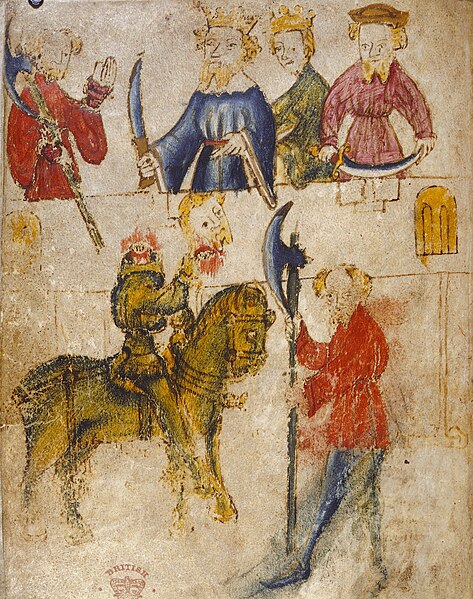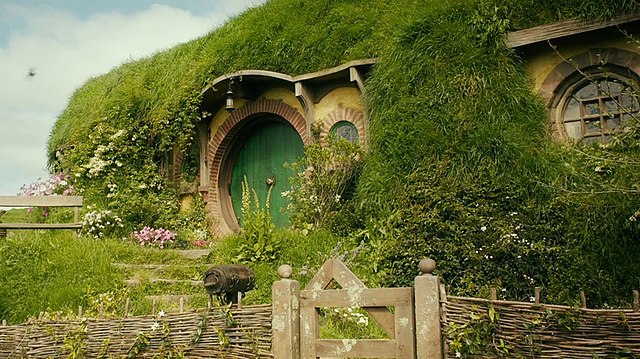Beorn is a character created by J. R. R. Tolkien, and part of his Middle-earth legendarium. He appears in The Hobbit as a "skin-changer", a man who could assume the form of a great black bear. His descendants or kinsmen, a group of Men known as the Beornings, dwell in the upper Vales of Anduin, between Mirkwood and the Misty Mountains, and are counted among the Free Peoples of Middle-earth who oppose Sauron's forces during the War of the Ring. Like the powerful medieval heroes Beowulf and Bödvar Bjarki, whose names both mean "bear", he exemplifies the Northern courage that Tolkien made a central virtue in The Lord of the Rings.
Beorn, by J. M. Kilpatrick, 2013
Beorn has been likened to a berserker, a warrior fighting in a trance-like state of fury. Illustrated is a Vendel era helmet plate from Öland, Sweden, depicting the god Odin guiding a berserker.
Beorn has been likened to Bertilak, the Green Knight encountered by Sir Gawain on his journey north. Painting from the manuscript of Sir Gawain and the Green Knight.
Mikael Persbrandt portrayed Beorn in Peter Jackson's Hobbit films with a "primitive energy" and an accent that was "perfect for the role".
Middle-earth is the setting of much of the English writer J. R. R. Tolkien's fantasy. The term is equivalent to the Miðgarðr of Norse mythology and Middangeard in Old English works, including Beowulf. Middle-earth is the human-inhabited world, that is, the central continent of the Earth, in Tolkien's imagined mythological past. Tolkien's most widely read works, The Hobbit and The Lord of the Rings, are set entirely in Middle-earth. "Middle-earth" has also become a short-hand term for Tolkien's legendarium, his large body of fantasy writings, and for the entirety of his fictional world.
A detail of Middle-earth in one of Peter Jackson's film sets
Medieval Christian cosmology: heaven above, earth in the middle, hell below. Vank Cathedral, Isfahan.






